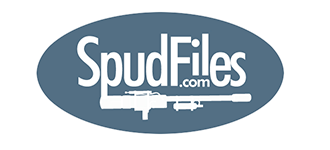randompkguy wrote:@pvcmaster: good catch
http://www.rlhudson.com/O-Ring Book/Gland Dimensions/table51.html
that's the table I have used for all my piston designs
Thanks for trying to answer my questions btw.
I'm not sure how powerful the design will be seeing that the force on a 1/2 inch projectile at 1000 psi is only 196 pounds, while the force on a 2 inch projectile fired at only 100 psi is 314 or so psi.
I know that if you take a sealed chamber and shrink it to 1/10th its original size you will have ten times the pressure with the same amount of air as the original chamber, therefore you should get a 1000% power increase (ten times) but as I said, you still only get 196 pounds on a 1/2 inch projectile, so it seems high pressures wont give that much of an fps advantage at such small barrel diameters...
The problem is very well stated.. Thanks for bringing this up as it is often a poorly understood subject.
Force, mass, and area and acceleration and how they are interrelated.
It is time for long drawn out discussion.
First the relationship to the projectile force from pressure. That is simple to understand. Bigger is more area is more force. Looking at smaller is less area is less force. That part is well understood.
Let's cut a few projectiles out of a sheet of 1 inch steel for example and look at the force/pressure/mass/acceleration relationships.
Let's do a 1/2 inch, a 1 inch and a 2 inch steel slug 1 inch long.. The area of each varies over a long range. However if you apply 100 PSI to all three of them, they will all accelerate at the exact same rate.
As the area increased in each case, the mass increased by the same amount.
Now do the above with only 1/2 inch steel plate.. Now each slug will have half the mass. Each slug will again accelerate at the same rate regardless of the diameter, but the 1/2 inch long slugs will out accelerate the 1 inch long ones as they are half the mass for the same respective areas.
The correct way to find the acceleration is not by being disappointed that you only get 196 lbs of push. That is only part of the story. 1 96 lbs of push on an object 8 times lighter will be very impressive because it will have more force per square inch than the 2 inch object at lower pressure..
I hope this makes sense.
The above example ignores the real world flow, friction, and other factors. So sue me..

This is a concept of physics only.








